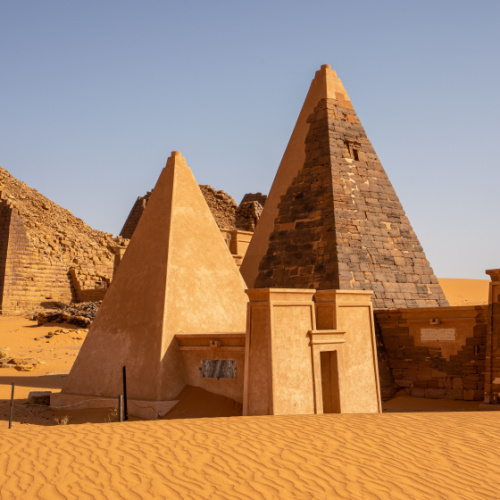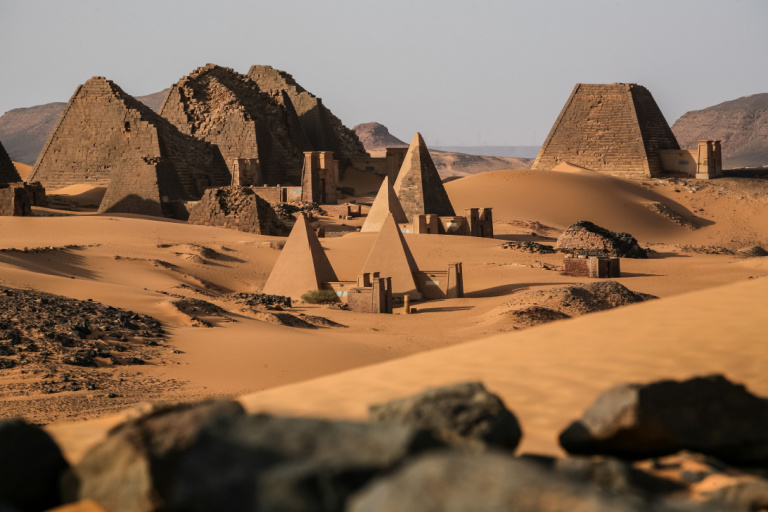
evenfh/Shutterstock
When Is the Best Time to Visit Sudan?
The best time to visit Sudan is during the shoulder seasons of November to March. During these months, the weather is generally mild and sunny across most of the country, with average temperatures ranging from 25 to 30 degrees Celsius (77 to 86 degrees Fahrenheit).
The humidity is also relatively low during the shoulder seasons, making it a comfortable time to be outdoors.
Here are some of the benefits of visiting Sudan during the shoulder seasons:
- Mild weather: Sudan has a hot and dry climate, but during the shoulder seasons, the weather is generally mild and pleasant across most of the country. This makes it ideal for sightseeing, exploring, and enjoying the outdoors.
- Smaller crowds: The shoulder seasons are less crowded than the peak summer months, so you’ll be able to enjoy Sudan’s popular tourist attractions without having to deal with large crowds. This is especially important if you’re visiting popular destinations like the Pyramids of Meroë, the Dinder National Park, and the Red Sea coast.
- Lower prices: Prices for flights, accommodation, and activities are generally lower during the shoulder seasons than during the peak summer months. This means you can save money on your trip without having to sacrifice quality.
- Diverse cultural experiences: Sudan is home to a rich and diverse culture, and the shoulder seasons are a great time to experience it all. From festivals and celebrations to traditional food and music, there’s something for everyone in Sudan during the shoulder seasons.
We recommend considering visiting Sudan during the shoulder seasons if you’re looking for the best possible travel experience. You’ll be able to enjoy mild weather, smaller crowds, and lower prices, making your trip more enjoyable and affordable.
Here are some specific examples of how you can enjoy the most of Sudan during the shoulder seasons:
- November to December: The weather in November and December is typically sunny and warm, with occasional showers. This is a great time to visit for exploring the ancient ruins of Meroë, visiting the Dinder National Park to see wildlife such as elephants, lions, and giraffes, and relaxing on the Red Sea coast.
- January to March: The weather in January and February is also typically sunny and warm, with occasional showers. This is a great time to visit for visiting the Pyramids of Meroë, trekking in the Nuba Mountains, and visiting the ancient city of Soba.
No matter what time of year you choose to visit Sudan, you’re sure to have a wonderful time. With its stunning scenery, rich history, and diverse culture, Sudan is a truly unique and unforgettable travel destination.
 Average Temperatures by Month
Average Temperatures by Month
|
Jan |
Feb |
Mar |
Apr |
May |
Jun |
Jul |
Aug |
Sep |
Oct |
Nov |
Dec |
| Fahrenheit |
76°
|
78°
|
85°
|
92°
|
98°
|
100°
|
100°
|
98°
|
96°
|
89°
|
80°
|
76°
|
| Celsius |
24°
|
26°
|
29°
|
33°
|
37°
|
38°
|
38°
|
37°
|
36°
|
32°
|
27°
|
24°
|
Climate in Sudan
Summer Season in Sudan
Summer in Sudan is characterized by extremely hot and dry weather, especially in the northern and central parts of the country. Temperatures often soar to very high levels, making it one of the hottest periods of the year. This season experiences minimal rainfall and is marked by arid conditions, particularly in the desert regions.
Rainy Season in Sudan
The rainy season in Sudan brings a significant change, especially in the southern and central regions where the rainfall is more pronounced. This period sees a drop in temperature compared to the scorching summer months, and the landscape turns greener. However, the northern parts of Sudan receive very little to no rainfall even during this season.
Winter Season in Sudan
Winter in Sudan is marked by cooler temperatures, particularly in the northern regions. It's a stark contrast to the intense heat experienced during the summer months. The winter season is relatively short and mild, with daytime temperatures that are warm and comfortable, making it a more pleasant time for outdoor activities and travel within the country. The amount of rainfall during this period is minimal.
Our Recommendations
| Destination |
Jan |
Feb |
Mar |
Apr |
May |
Jun |
Jul |
Aug |
Sep |
Oct |
Nov |
Dec |
| Sudan |
 |
 |
 |
 |
 |
 |
 |
 |
 |
 |
 |
 |






